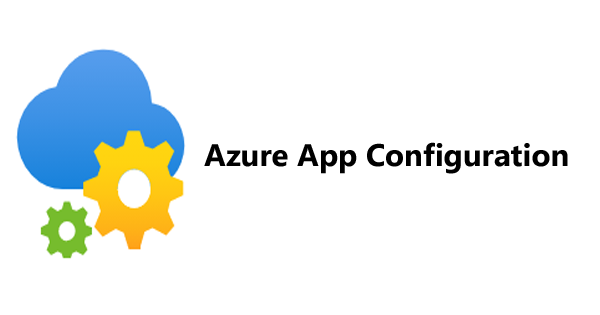The Ultimate Guide to Mastering Azure App Configuration
 Ambuz Ranjan
Ambuz RanjanTable of contents
- What is Azure App Configuration?
- Initial Setup & Deployment
- Core Features & Their Granular Details
- Seamless Integration with Azure Ecosystem
- In-depth Security Protocols
- Advanced Tips & Best Practices
- Advanced Use Cases
- Exploring Practical Scenarios
- Performance, Pricing, & Limitations
- Bonus: Accessing Azure App Configuration in .NET Core
- Conclusion

What is Azure App Configuration?
Azure App Configuration provides a centralized repository that empowers developers to separate configurations from code, thereby facilitating application scalability and rapid iteration. With the emergence of microservices and containerization, managing configurations has grown increasingly complex. Azure App Configuration offers an elegant solution by centralizing those configurations in a single location, enabling dynamic updating without the need to redeploy your application.
Why It's a Game Changer
It's essential to understand why centralized management is so critical. For large organizations or even for small projects with complex scaling requirements, managing a spaghetti tangle of config files or environment variables can be a nightmare. Azure App Configuration offers:
Versioning: Each key-value pair is versioned, allowing developers to roll back or audit changes.
Encryption: Secure your sensitive data both at rest and in transit.
Configuration Decoupling: No more hard-coded settings or bulky config files. Isolate configurations from code, making them dynamically adaptable and thereby facilitating microservices architectures.
Dynamic Adaptability: No need for application redeployment when changing configurations, reducing downtime and complexity.
Versioning and Rollback: Track changes and rollback to previous configurations if something goes wrong.
Initial Setup & Deployment
Pre-requisites
Azure Account: Required for accessing Azure's cloud-based services.
Azure SDK: Essential for integrating Azure services directly into your application, available in multiple languages like .NET, Java, Python, etc.
Step-by-Step Deployment
Azure Portal Setup:
Log into the Azure Portal.
Navigate to "All Services" and then look for "App Configuration."
Click on “Add” to create a new instance. This will ask you to fill in details such as the name, resource group, and location.
CLI-Based Approach:
- Use the Azure CLI command
az appconfig create --name [your_app_name] --resource-group [your_resource_group] --location [your_location]to create a new App Configuration instance.
- Use the Azure CLI command
SDK Integration:
The final step is to integrate Azure App Configuration into your application using the appropriate SDK. For instance, in a .NET application, you can use Microsoft's Configuration API to fetch the key-value pairs.
Accessing Azure App Configuration in a .NET Core Application
NuGet Package Installation: First, ensure you have the Azure App Configuration SDK for .NET Core installed. Use the NuGet Package Manager or the .NET CLI:
dotnet add package Microsoft.Azure.AppConfiguration.AspNetCoreSetting Up Configuration:
In the
Startup.csfile, modify theConfigureServicesmethod to include the Azure App Configuration:using Microsoft.Extensions.Configuration.AzureAppConfiguration; public void ConfigureServices(IServiceCollection services) { services.AddAzureAppConfiguration(); // Other services registration }Access Configuration in the
Program.cs:Adjust the
CreateHostBuildermethod in yourProgram.csto pull configurations from Azure App Configuration:using Microsoft.Extensions.Configuration.AzureAppConfiguration; public static IHostBuilder CreateHostBuilder(string[] args) => Host.CreateDefaultBuilder(args) .ConfigureWebHostDefaults(webBuilder => { webBuilder.UseStartup<Startup>(); }) .ConfigureAppConfiguration((hostingContext, config) => { var settings = config.Build(); config.AddAzureAppConfiguration(options => { options.Connect(settings["ConnectionStrings:AppConfig"]) .UseFeatureFlags(); }); });Make sure to replace
ConnectionStrings:AppConfigwith your connection string's appropriate configuration key from the app settings or environment variables.Accessing the Configuration:
You can now inject
IConfigurationinto any controller, service, or other classes to access the configuration values:public class MyService { private readonly IConfiguration _configuration; public MyService(IConfiguration configuration) { _configuration = configuration; } public void MyMethod() { string myValue = _configuration["MyKey"]; // Use the value as required. } }
Core Features & Their Granular Details
Key-Value Data Store
Hierarchical Storage: Organize keys hierarchically like a directory structure. For example,
App:Modules:Login:Timeoutcould define a timeout setting specifically for a login module within an app.Data Types: Azure App Configuration supports storing various data types, including integers, Booleans, and JSON objects.
Labels in Configurations
Labels in Azure App Configuration are crucial when you need to differentiate configurations based on environments or versions. You can use labels such as 'Prod', 'Dev', or 'V2' to easily switch contexts.
Feature Flags
Azure App Configuration has built-in support for managing feature flags, which allows for controlled feature rollouts and A/B testing.
Dynamic Control: The main allure here is being able to toggle features without code deployments.
Audience Targeting: Feature flags can also be targeted towards specific user groups. This is particularly useful for Canary releases or phased rollouts.
Configuration Revisions
Revisions are the backbone of your configuration's history. You can:
Inspect Past Versions: Great for auditing purposes.
Rollbacks: If a newly deployed configuration causes issues, rollback to a previous state.
Seamless Integration with Azure Ecosystem
Azure Key Vault
When it comes to sensitive information, you shouldn’t just keep these in plaintext within your configuration files. Azure Key Vault integration enables you to reference secrets directly within your configurations, making the whole process more secure.
Azure Active Directory (AAD)
For larger teams, especially where multiple personnel might have varying degrees of access to configurations, integrating with Azure Active Directory can be a godsend. You can define roles and permissions at a granular level, ensuring that every team member has the appropriate level of access.
Monitoring and Alerts
Monitoring is made incredibly straightforward with Azure Monitor and Application Insights. These tools enable you to set up real-time monitoring and automated alerts based on certain conditions or thresholds.
In-depth Security Protocols
Encryption
Let’s delve a bit deeper into encryption. Azure App Configuration supports:
In-transit Encryption: This is facilitated through Transport Layer Security (TLS).
At-rest Encryption: Here, you can choose between Azure-managed keys or using your keys stored in Azure Key Vault.
Network Security
Your App Configuration data can be secured further by specifying Virtual Network (VNET) rules. You can control which networks have access to your App Configuration store, adding an additional layer of security.
Identity and Access Management
Azure AD offers a robust IAM solution when integrated with Azure App Configuration. Managed Identities can be used for service-to-service authentication, making it a highly secure, credential-less option.
Private Endpoints
Azure Private Link provides secure, direct connectivity to Azure services. By utilizing this, you can ensure that your App Configuration data travels over a private network, offering yet another layer of security.
Advanced Tips & Best Practices
Structuring Configurations
When your application scales, you'll be dealing with hundreds, if not thousands, of keys. The structuring of these keys is crucial for easy management. The hierarchical structure supported by Azure App Configuration is beneficial here.
Error Handling
When using configurations in your application, you should be prepared for potential failures in fetching them. Implementing retries, circuit breaker patterns, or even reverting to a cached, previous version could be beneficial.
Performance Optimization
Caching strategies can significantly enhance performance. You don't need to fetch the configuration data every time a particular setting is accessed. Proper caching and invalidation strategies can lead to a highly responsive application.
Advanced Use Cases
Blue-Green Deployments: Utilize feature flags for seamless deployments.
Geo-distributed Applications: Understand latency and how to manage configurations for global user bases.
Migration Protocols: Tools and procedures for migrating between App Configuration stores.
Exploring Practical Scenarios
Distributed Microservices: How Azure App Configuration helps maintain harmony in configurations across services.
Mobile Apps: Dynamically changing configurations for a global user base without needing app updates.
Microservices Architecture: Centralizing configurations for a smoother DevOps cycle.
E-commerce Platforms: How feature management aids in phased feature rollouts.
Performance, Pricing, & Limitations
Scalability: Azure App Configuration is built to scale as your needs grow.
Pricing Models: Delve into free versus standard pricing tiers, understanding the benefits and constraints of each.
Potential Limitations: From maximum request rates to storage capacities, understand the boundaries.

Bonus: Accessing Azure App Configuration in .NET Core
If you've ventured into cloud development with Microsoft Azure, you may have stumbled upon Azure App Configuration – a service designed to centralize application settings. Here's how you can integrate it into your .NET Core application:
Create a new Web API project:
dotnet new webapi -n AzureAppConfigSampleNavigate to the new project folder:
cd AzureAppConfigSampleAdd the Azure App Configuration SDK:
dotnet add package Microsoft.Azure.AppConfiguration.AspNetCoreModify
Startup.cs:Add the
Microsoft.Extensions.Configuration.AzureAppConfigurationnamespace:using Microsoft.Extensions.Configuration.AzureAppConfiguration;And add
services.AddAzureAppConfiguration();to theConfigureServicesmethod:public void ConfigureServices(IServiceCollection services) { services.AddAzureAppConfiguration(); services.AddControllers(); }Modify
Program.cs:Add the
Microsoft.Extensions.Configuration.AzureAppConfigurationnamespace:using Microsoft.Extensions.Configuration.AzureAppConfiguration;Modify the
CreateHostBuildermethod:public static IHostBuilder CreateHostBuilder(string[] args) => Host.CreateDefaultBuilder(args) .ConfigureWebHostDefaults(webBuilder => { webBuilder.UseStartup<Startup>(); }) .ConfigureAppConfiguration((hostingContext, config) => { var settings = config.Build(); config.AddAzureAppConfiguration(options => { options.Connect("YOUR_AZURE_APP_CONFIGURATION_CONNECTION_STRING") .UseFeatureFlags(); }); });Replace
"YOUR_AZURE_APP_CONFIGURATION_CONNECTION_STRING"with your actual Azure App Configuration connection string.Use Configuration in a Controller:
Create a new Controller,
ConfigController.cs, to expose a simple endpoint that returns a configuration value.using Microsoft.AspNetCore.Mvc; using Microsoft.Extensions.Configuration; [Route("api/[controller]")] [ApiController] public class ConfigController : ControllerBase { private readonly IConfiguration _configuration; public ConfigController(IConfiguration configuration) { _configuration = configuration; } [HttpGet] public IActionResult GetConfigValue() { string configValue = _configuration["MySampleKey"]; return Ok(configValue); } }Assuming you have a configuration named
MySampleKeyin your Azure App Configuration, navigating to/api/configwould return its value.Run the Application:
dotnet runVisit
https://localhost:5001/api/config(or the appropriate port your application runs on) to see the value from Azure App Configuration.Make sure to add error handling and other best practices as this is a basic example for demonstration purposes.
Conclusion
Azure App Configuration stands as a robust, scalable, and highly integrative service. It does much more than merely managing your application's configurations; it provides a streamlined workflow that every modern cloud-based application can benefit from. The platform's ability to integrate seamlessly with other Azure services makes it a comprehensive solution for any organization’s configuration management needs.

Thank you for reading this Blog. Hope you learned something new today! If you found this blog helpful, please like, share, and follow me for more blog posts like this in the future.
If you have some suggestions I am happy to learn with you.
I would love to connect with you on LinkedIn
Meet you in the next blog....till then Stay Safe ➕ Stay Healthy
#HappyLearning #devops #Azure #AppConfiguration #DotNetCore #CloudDevelopment #MicrosoftAzure #ConfigurationManagement #AzureServices #WebDevelopment #CloudServices #AzureAppConfig #DotNetDevelopment #AzureTips #CloudComputing #AzureIntegration #AspNetCore
Subscribe to my newsletter
Read articles from Ambuz Ranjan directly inside your inbox. Subscribe to the newsletter, and don't miss out.
Written by

